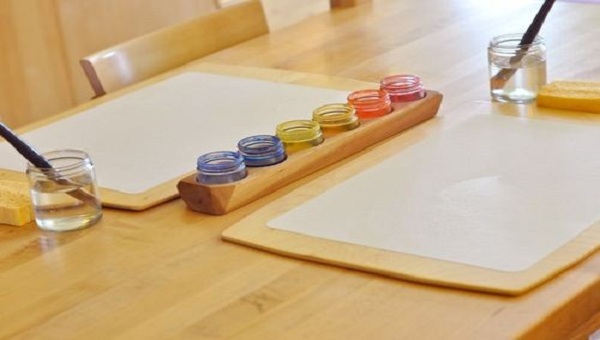Five months back, it finally happened. I decided to go au natural with my hair. I had already reduced/cut chemicals, additives, and what-not in many areas of the home, but by golly I was holding on to my Garnier Fructis shampoo and mousse. I still love the stuff, but have been more than pleased with the results of my homemade shampoo and yes…gel :). My first thought when people say they are going natural on their hair is the “No Poo” challenge, which basically means no shampoo, only baking soda and apple cider vinegar. Well, there was some courage lacking in this department, so I thought I’d attempt an in-between. I knew I didn’t want to pay for natural shampoos, so I decided to try a few recipes.
Of course, everybody’s hair is different, so the “no poo” might actually work for yours. For some, my recipes might not work (although I think they’re pretty awesome). Regardless of how healthy your hair is, there will be a transition period, especially if you use hair products regularly. My transition period took about a week. Even if all you use on your hair is a store bought shampoo, you would be amazed at how much it still strips moisture from your hair (which is why so many people feel the need to then add a moisturizer).
I’m an all-or-nothing kind of gal, so I vowed not to put anything store bought in my hair for one month. Yikes. I was terrified. I was expecting oily, flat, smelly hair that I would have to wrap in a bandana every day. For the record, I’m not a bandana or hat person!
Nevertheless, I took the plunge. I was honestly surprised at how painless it was. And though I like it better now that my hair has fully adjusted, it really wasn’t so bad. I used a blow dryer and brush and made it work.
Now, I spend hardly anything on my shampoo, and even less than that on my homemade gel (which I am LOVING! in this summer heat and humidity).
Shampoo Recipe 1:
If you feel your hair is damaged and could benefit from a gentle “stripping” shampoo, I would recommend this recipe for 1-4 weeks. I used it for 3 weeks and it was very effective. I personally wouldn’t recommend it for long term use due to how powerful castile soap can be when not diluted as much. However, lots of people find it effective on their hair.
Mix:
¼ Cup Water
¼ Cup Liquid Castile soap (I use a scented Dr. Bronner’s)
½ Teaspoon Oil (like jojoba, olive, coconut, or grapeseed)
Shampoo Recipe 2:
This is my daily shampoo recipe that I use now.
Ingredients:
Note: This is for a full recipe. I usually halve it because I don’t want to store a gallon of shampoo
1 gallon of water
8 tea bags (I like a cheapo green tea best; you could just use water, as well)
1/2 cup baking soda
1/4 cup castile soap (I use a scented one-peppermint-so I don’t have to add essential oils)
3 tsp xanthan gum (for thickening; you could use cornstarch as well, but it tends to clump easier)
essential oils (about 30 drops-optional; I don’t use)
Instructions:
Place tea bags in large pot with water. Bring just to boiling, then remove from heat, cover, and let steep for 10-15 minutes.
Remove tea bags and stir in baking soda. It will fizz for a minute or so.
Mix in the xanthum gum, a little at a time, whisking vigorously. Then add the castile soap.
After it cools completely you can stir in your essential oils (optional).
You can store the shampoo in an old washed out container. (I use a Homestead Creamery Jug.) I put what I use daily in a spritz bottle. This works really well for helping it foam, as homemade soaps don’t have all the foaming agents of store bought.
Gel recipe to come next month, and when my hair gets a little longer, I will begin experimenting with a detangling conditioner!
Recipe adapted from: http://ashleyshomemadeadventures.wordpress.com/2012/01/24/homemade-shampoo/



